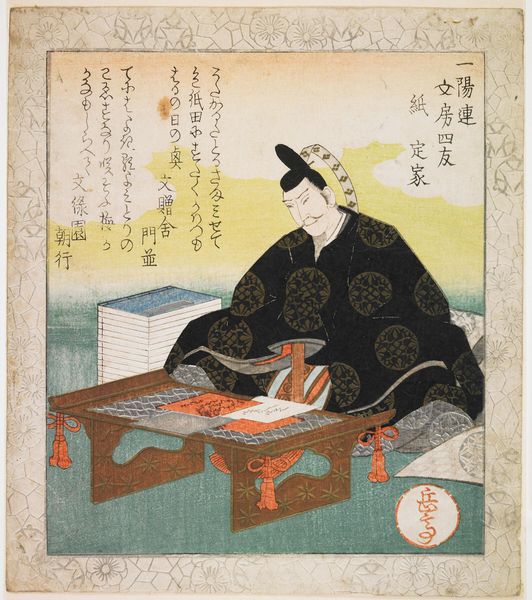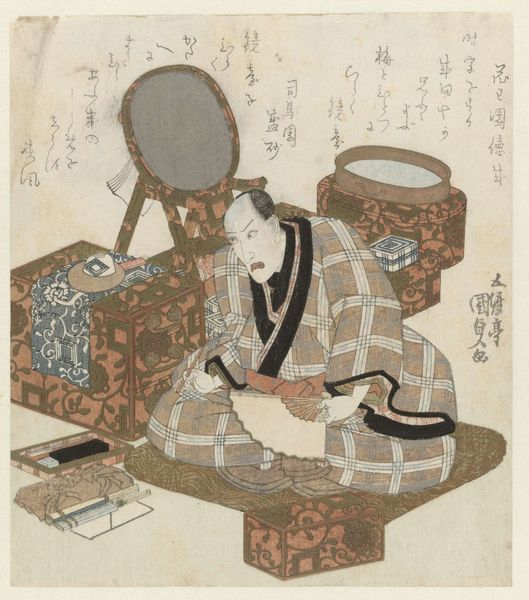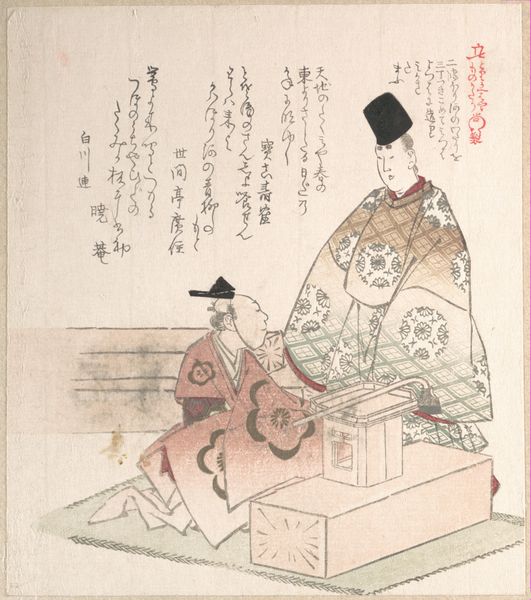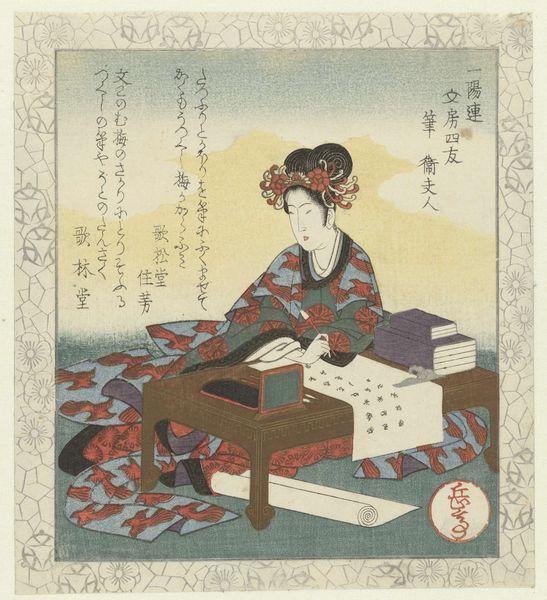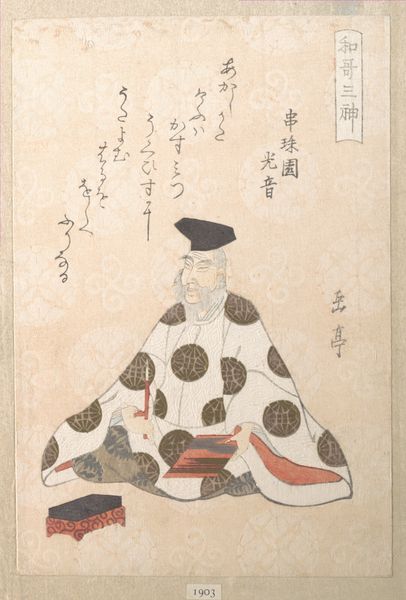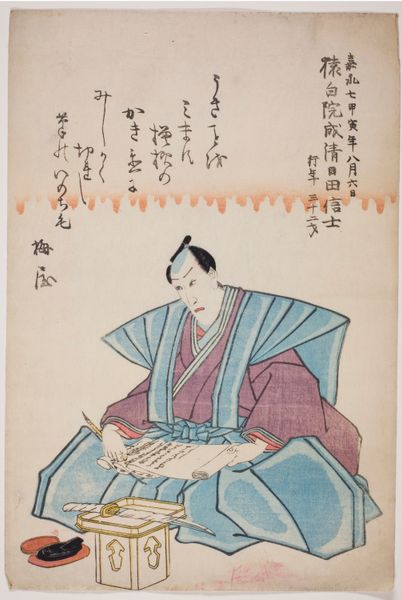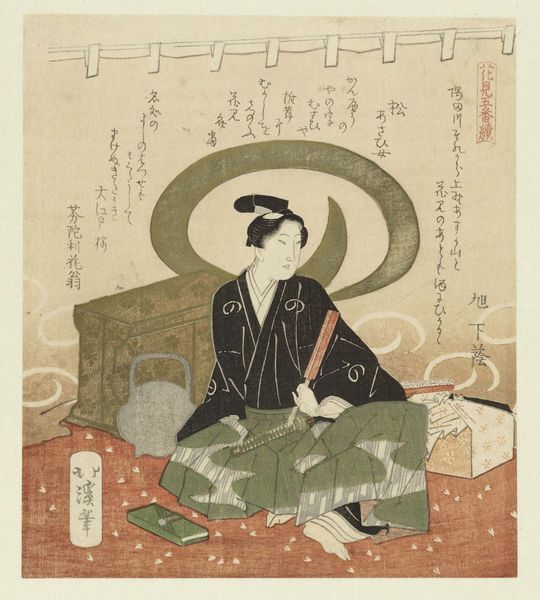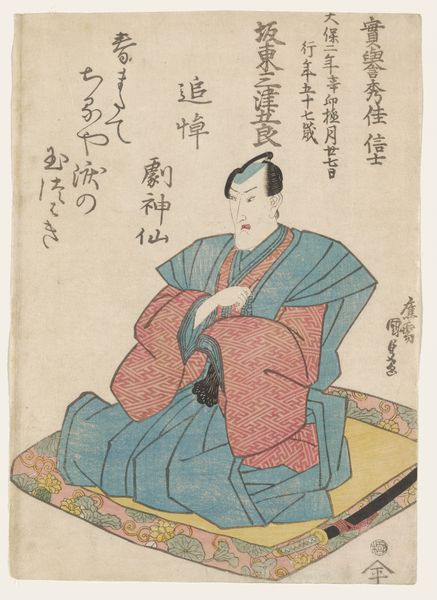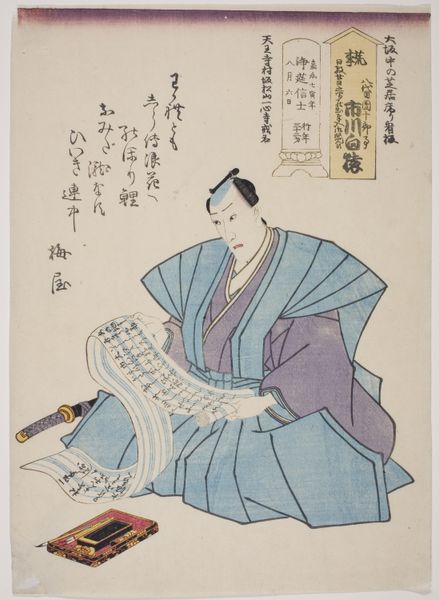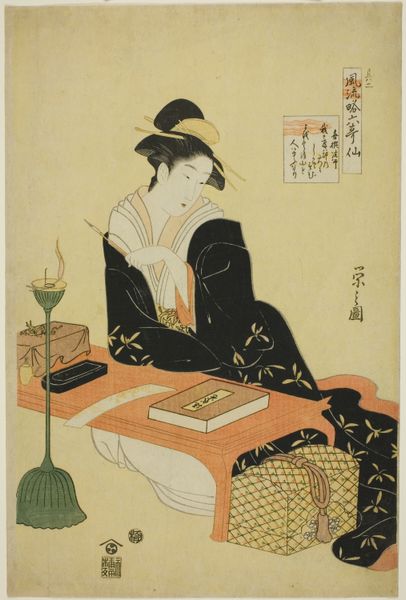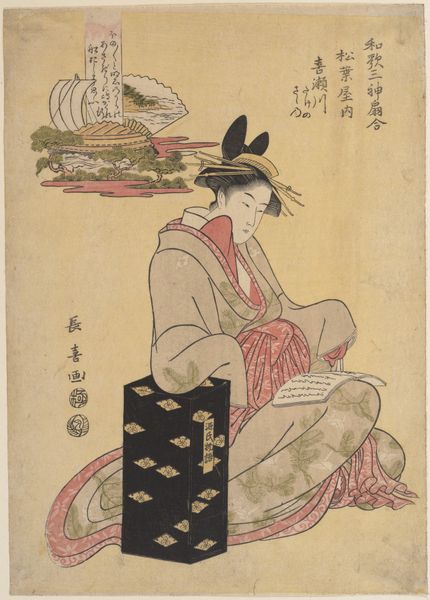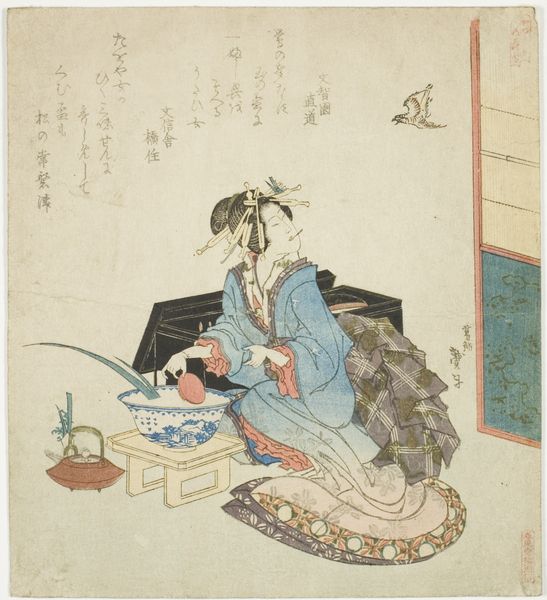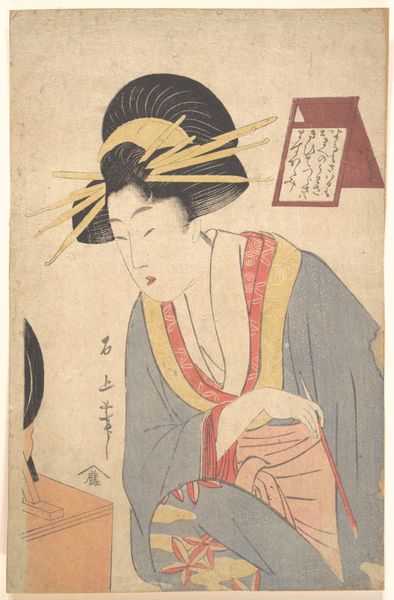
Paper: Fujiwara no Sadaie (Kami: Teika), from the series "The Four Friends of the Writing Table for the Ichiyo Circle (Ichiyoren bunbo shiyu)" c. 1827
0:00
0:00
print, paper, watercolor, ink, woodblock-print
#
portrait
#
water colours
# print
#
asian-art
#
ukiyo-e
#
japan
#
paper
#
watercolor
#
ink
#
woodblock-print
#
genre-painting
Dimensions: 20.7 × 17.8 cm
Copyright: Public Domain
Curator: The subject of this work appears deeply immersed in thought, an almost somber mood. What’s your initial reaction to it? Editor: It certainly has a quiet intensity. I'm immediately struck by the subject's isolation and focus, creating a feeling of introspection that pervades the piece. Curator: That's perceptive. What we're looking at is a print made around 1827 by Yashima Gakutei. It’s titled "Paper: Fujiwara no Sadaie," or Kami: Teika, and is part of a series called "The Four Friends of the Writing Table for the Ichiyo Circle." The medium used is a woodblock print with ink and watercolor on paper. Editor: Ah, so we have a visual meditation on scholarship and creative company. Given it's ukiyo-e, I’m assuming there’s more to unpack about the representation of the scholar. The detail is amazing for a print. Curator: Precisely. In this piece, Sadaie, a noted poet and critic of the Kamakura period, sits poised with brush in hand as if contemplating each character he will paint with intention. Notice the geometric patterns on his robe; those bear social weight. Editor: I find myself drawn to the limited palette and soft gradations in the background, it does speak to the idea of contemplation and reflection, the colors mirror his inward thoughts. Curator: Gakutei masterfully uses symbolism here, linking back to a lineage of revered calligraphers. Editor: The table almost acts as a stage for Sadaie's intellectual drama. Curator: Yes! It underscores the performative nature of scholarship and the creation of culture in its moment. It asks us to consider the past in shaping Japan's contemporary social and creative life. Editor: Knowing all this enriches my appreciation of the work and encourages a deeper investigation of what this scene may be suggesting about its cultural setting. Curator: It offers a beautiful point of entry into understanding the importance of that period for Japan’s culture and art historical movements that came after it.
Comments
No comments
Be the first to comment and join the conversation on the ultimate creative platform.
